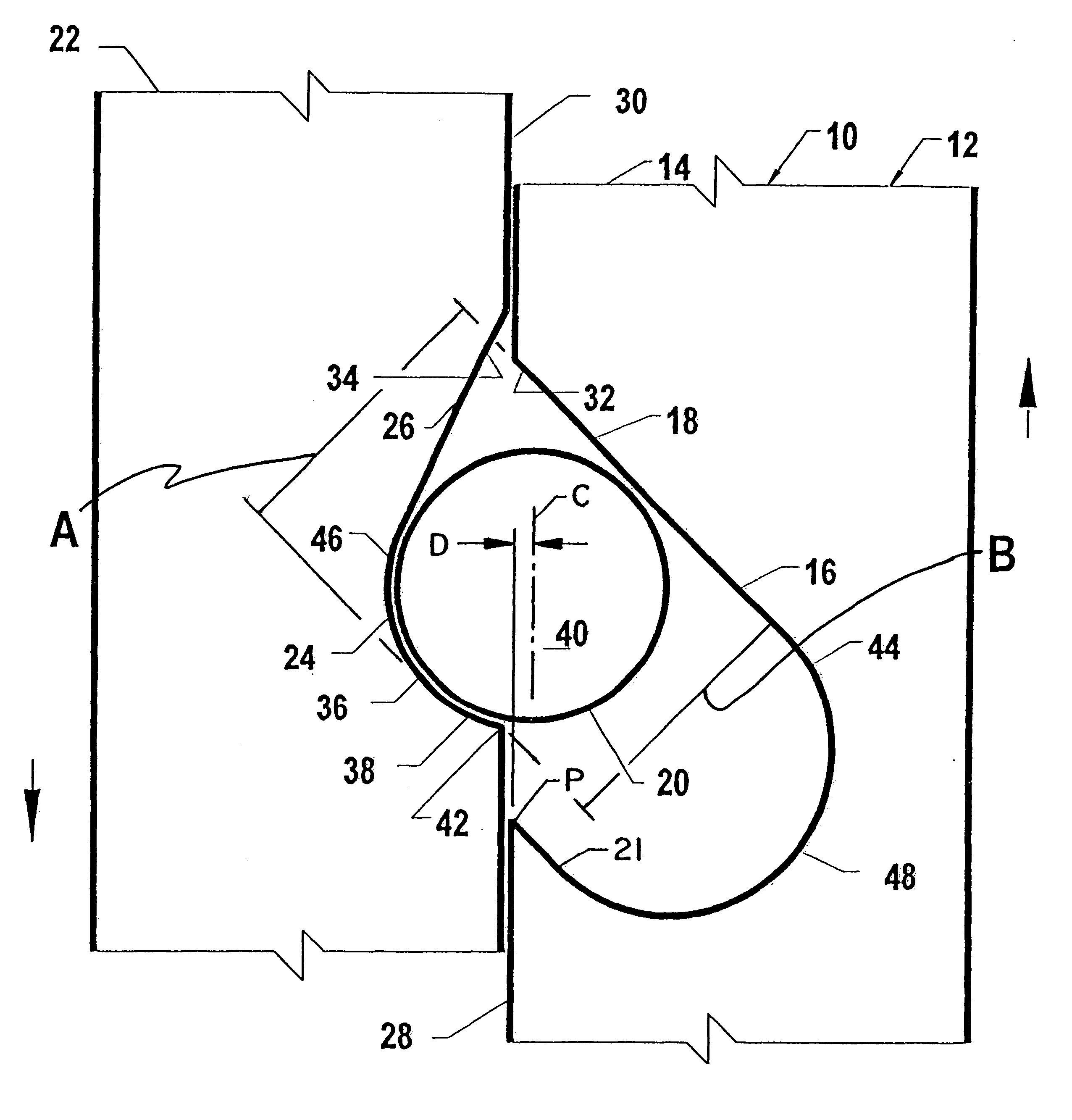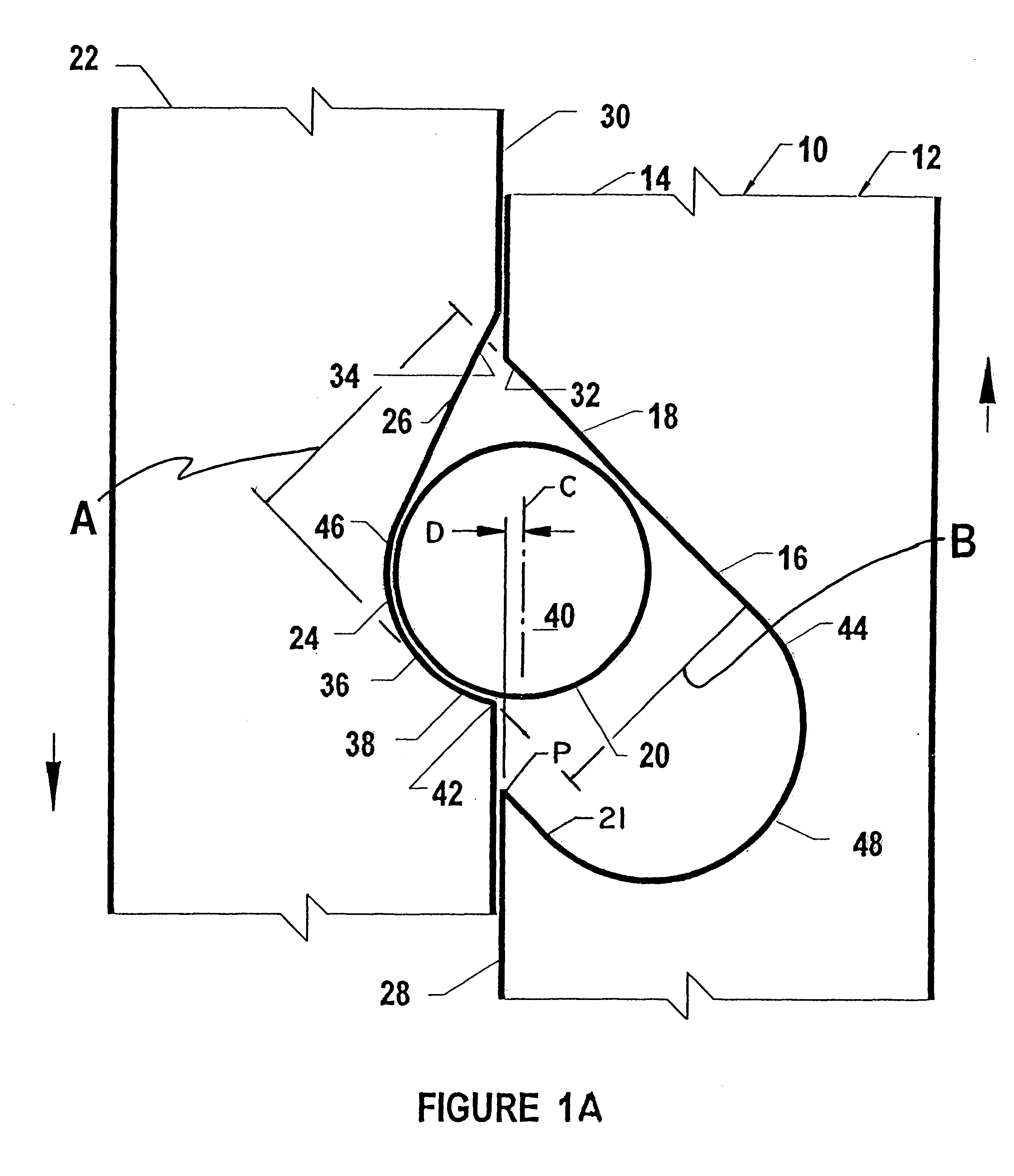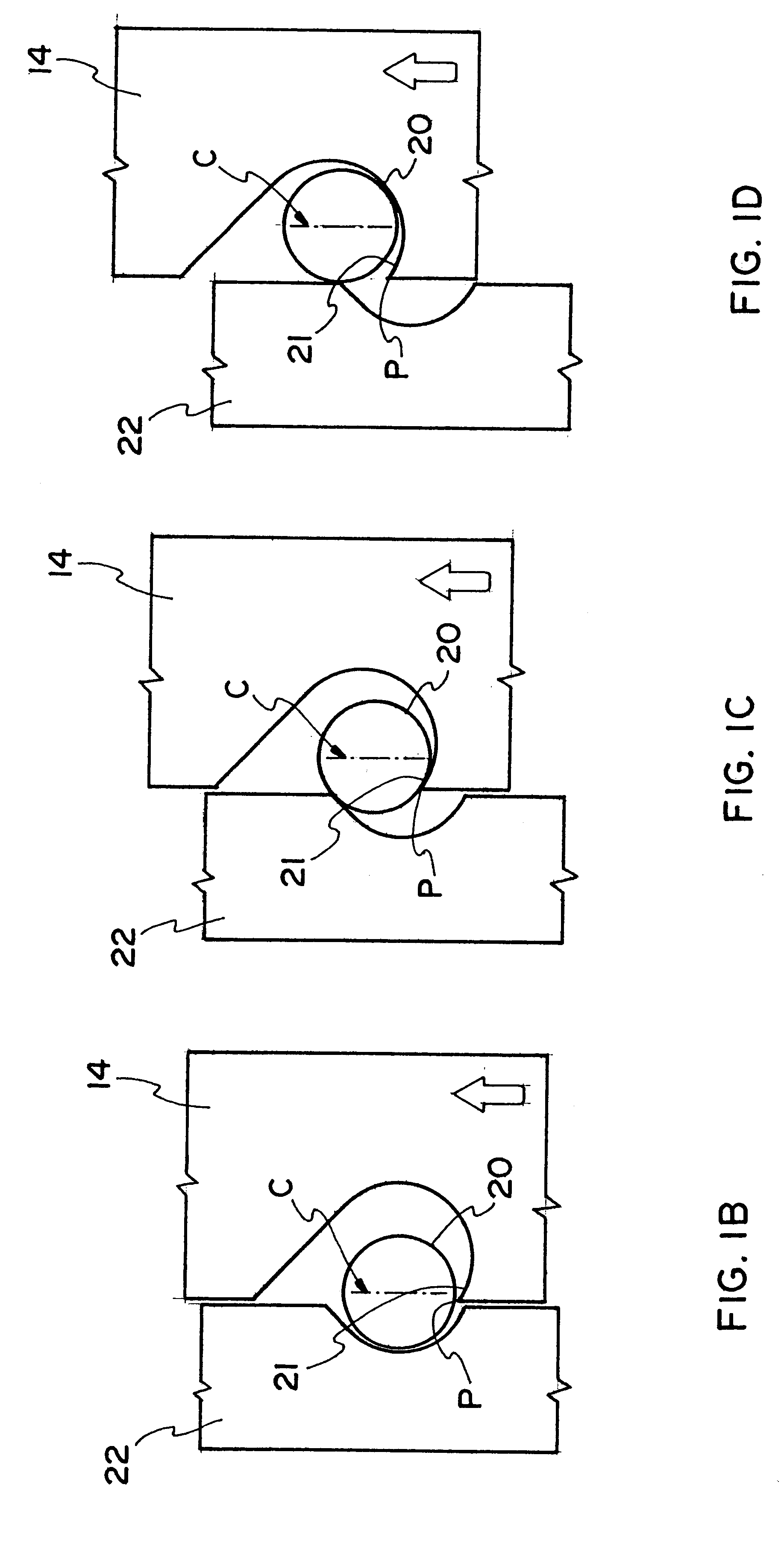Tie down building, system tie down, and method
a technology of tie-down and building, applied in the direction of rod connection, human health protection, shock proofing, etc., can solve the problems of manual manipulation and assembly is not self-adjusting, and achieve the effect of preventing the lifting of walls
- Summary
- Abstract
- Description
- Claims
- Application Information
AI Technical Summary
Benefits of technology
Problems solved by technology
Method used
Image
Examples
embodiment 12
The fastener assembly 10, in the three member embodiment 12, is illustrated in FIGS. 1 through 8, to show a preferred arrangements of at least the minimal portions of at least three members, and how the respective relative movements thereof occur, during the sequences of their locking, in the presence of a relative force applied in one direction, and their incremental movement, in the presence of a relative force applied in the other direction. The assembly 10 may be color coded.
The first member 14 is oriented in some instance longitudinally axially and in others arcuately or circularly and, also called the receiver component 14, has a full receiving volume 16, with a cam surface 18, arranged on a bias, i.e., on an angle, so cam surface 18 is effective in guiding the movement of the third member 20 showing a center line C, also called the locking component, into and out of the full receiving volume 16. A third member 20 is circular-in-cross-section and may be a ball, ring or a rolle...
embodiment 244
As illustrated in FIG. 48, an embodiment 244 is provided, wherein the first member 246, having a smooth internal surface 248, and pre-fitted with locking components 234, received in full receiving volumes 232, along with other like sub assemblies 250, not shown, are placed about an extended member 252, having a circular cross section. At a selected location along the extended member 252,the sub assembly 250 is positioned on the extended member 252. Then the second member 254 having partial receiving volumes 240, and also having an axially directed opening 256, is moved to be positioned about the extended member 252. Thereafter, the second member 254 is moved axially for one way axial movement relative to the first member 246 to fully receive the first member 246. At this selected, location, another selected part, not shown, is often secured to the second member 254 during the fabrication or manufacture of an overall product or assembly, not shown.
THE COMMON FEATURES AND COMMON OBJEC...
PUM
 Login to View More
Login to View More Abstract
Description
Claims
Application Information
 Login to View More
Login to View More - R&D
- Intellectual Property
- Life Sciences
- Materials
- Tech Scout
- Unparalleled Data Quality
- Higher Quality Content
- 60% Fewer Hallucinations
Browse by: Latest US Patents, China's latest patents, Technical Efficacy Thesaurus, Application Domain, Technology Topic, Popular Technical Reports.
© 2025 PatSnap. All rights reserved.Legal|Privacy policy|Modern Slavery Act Transparency Statement|Sitemap|About US| Contact US: help@patsnap.com



